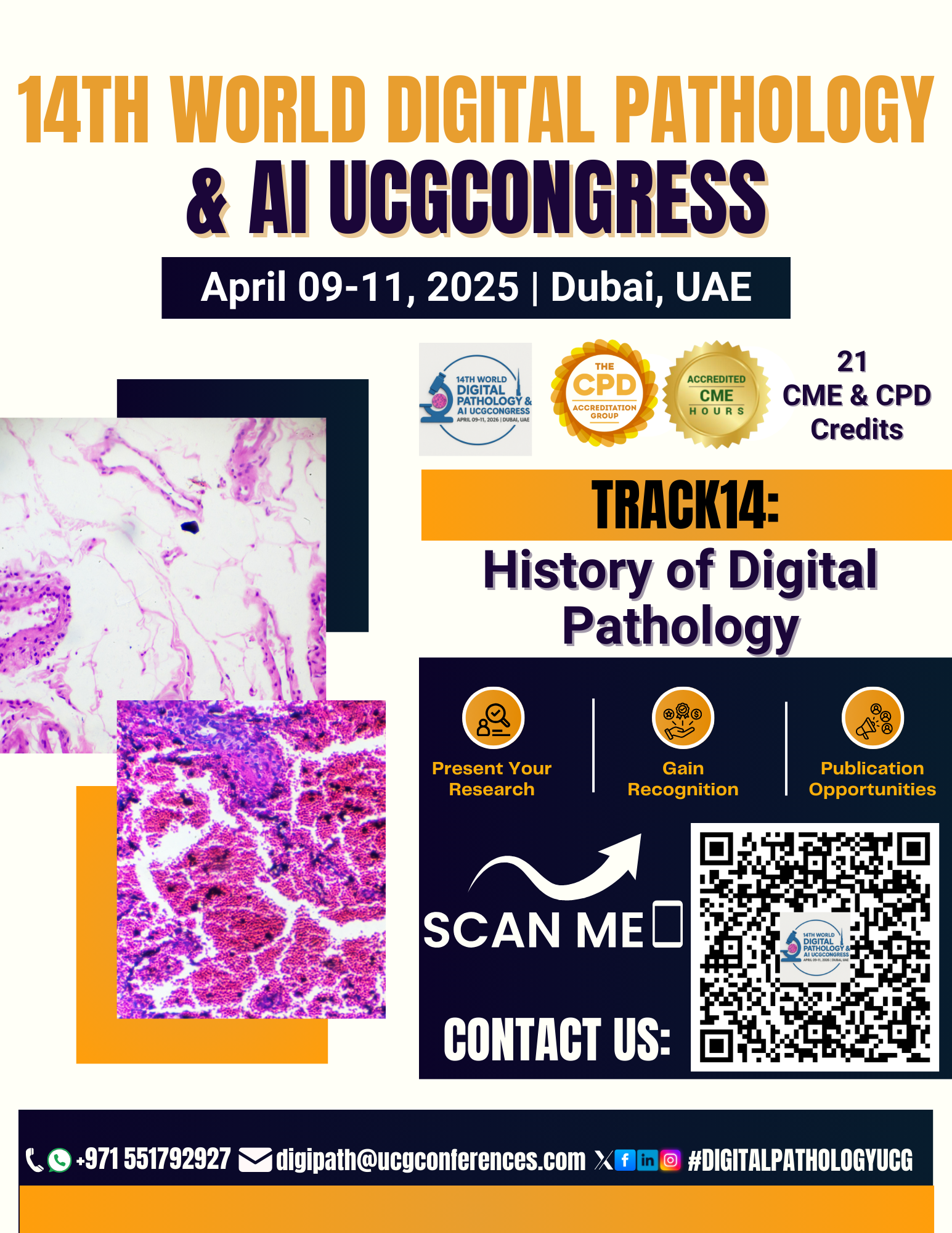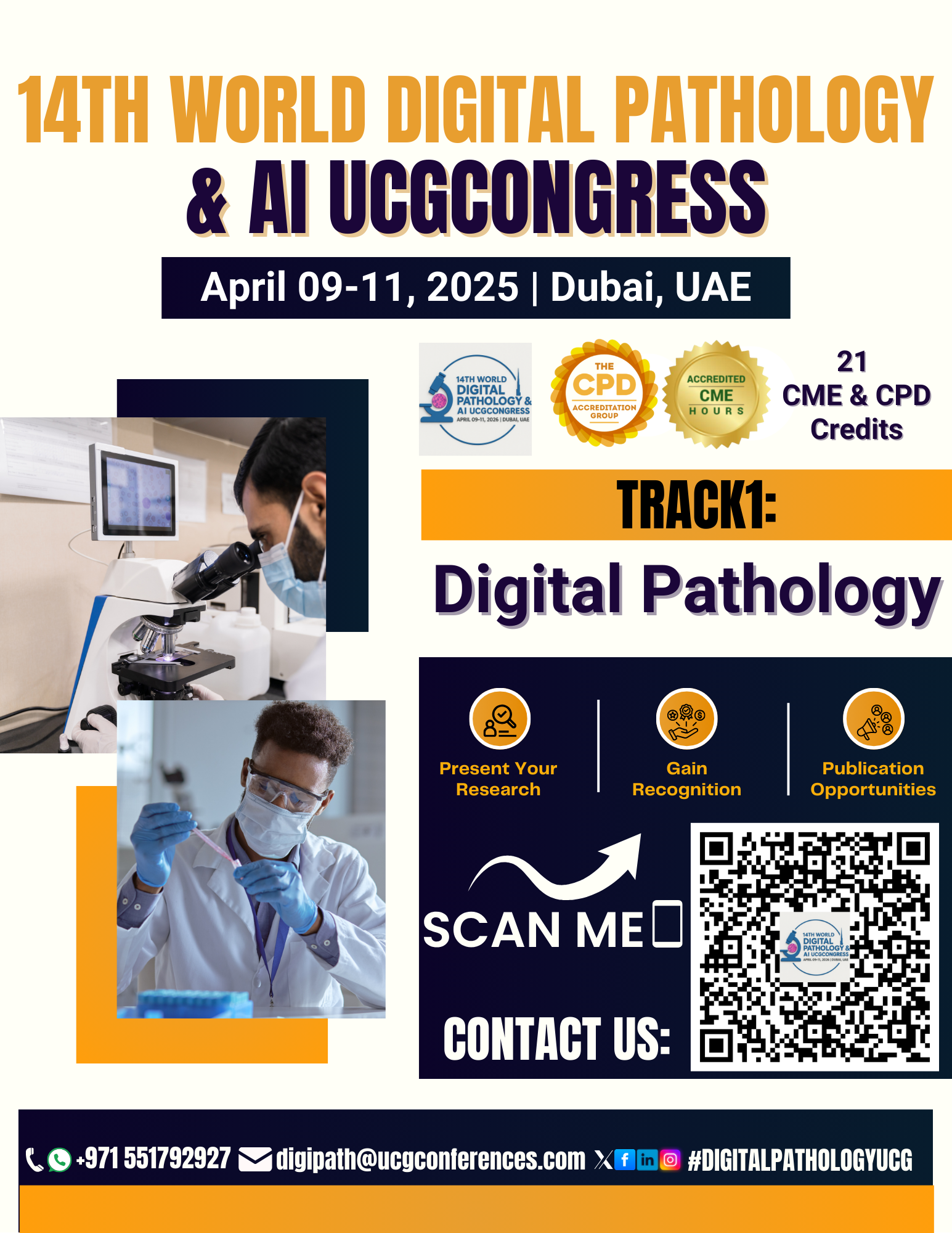



Sub track:-
Enhanced Image Quality Quantitative Analysis, Faster Turnaround Times,...

Sub track:-
Integration of Imaging Modalities, Advanced Image...

Track Overview:
The
history of digital pathology is a fascinating journey of technological
innovation, from early image capture systems to today's advanced AI-driven
diagnostic tools. This track will explore the evolution of digital pathology,
highlighting key milestones, technological advancements, and the impact of
digital tools on the field of pathology. Attendees will gain insights into how
digital pathology has transformed the profession, shaped modern diagnostics,
and laid the foundation for future advancements in healthcare.
Key Topics:
Early
Developments in Digital Imaging:
Exploring the first digital imaging systems used in pathology, including early
attempts at whole slide imaging (WSI) and digital slide scanning.
Advancements
in Image Capture and Storage:
How the development of high-resolution imaging technologies, digital storage
solutions, and cloud platforms revolutionized the accessibility and sharing of
pathology slides.
The
Role of Computers and Software in Pathology: The introduction of
computer-aided diagnosis (CAD) systems and the evolution of software tools for
image analysis and diagnostic support.
The
Emergence of Whole Slide Imaging (WSI): The development and adoption of WSI
technologies, which allowed pathologists to view and analyze slides digitally
rather than using traditional microscopes.
Integration
with AI and Machine Learning:
The role of artificial intelligence and machine learning in advancing digital
pathology, from automated image analysis to predictive modeling in diagnostics.
Regulatory
Milestones and Clinical Adoption:
The journey toward regulatory approvals, standardization, and the widespread
clinical adoption of digital pathology tools, including FDA clearance and
compliance with medical standards.
Learning
Objectives:
Gain
a deep understanding of the evolution of digital pathology from early imaging
systems to the advanced technologies used today.
Learn
about key developments such as whole slide imaging, AI integration, and
regulatory milestones that have shaped the field.
Explore
how digital pathology has transformed diagnostic workflows, clinical
decision-making, and patient care.
Understand
the challenges and successes in integrating digital pathology into clinical
practice and research.
Target
Audience:
Pathologists,
healthcare professionals, technology developers, and researchers interested in
the history and development of digital pathology.
Students
and early-career professionals wanting to understand the foundational
milestones in digital pathology.
Speakers/Presenters:
Experts
in the history of digital pathology and its technological advancements.
Researchers
and pioneers who have contributed to the development of digital pathology tools
and systems.
Regulatory
experts and industry leaders who have played a role in the adoption of digital
pathology in clinical settings.
Conclusion:
This
track will offer a comprehensive look back at the history of digital pathology,
illustrating how far the field has come and the breakthroughs that continue to
shape its future. It will highlight the technologies, milestones, and
innovators that have paved the way for the modern, data-driven pathology
practices we rely on today.